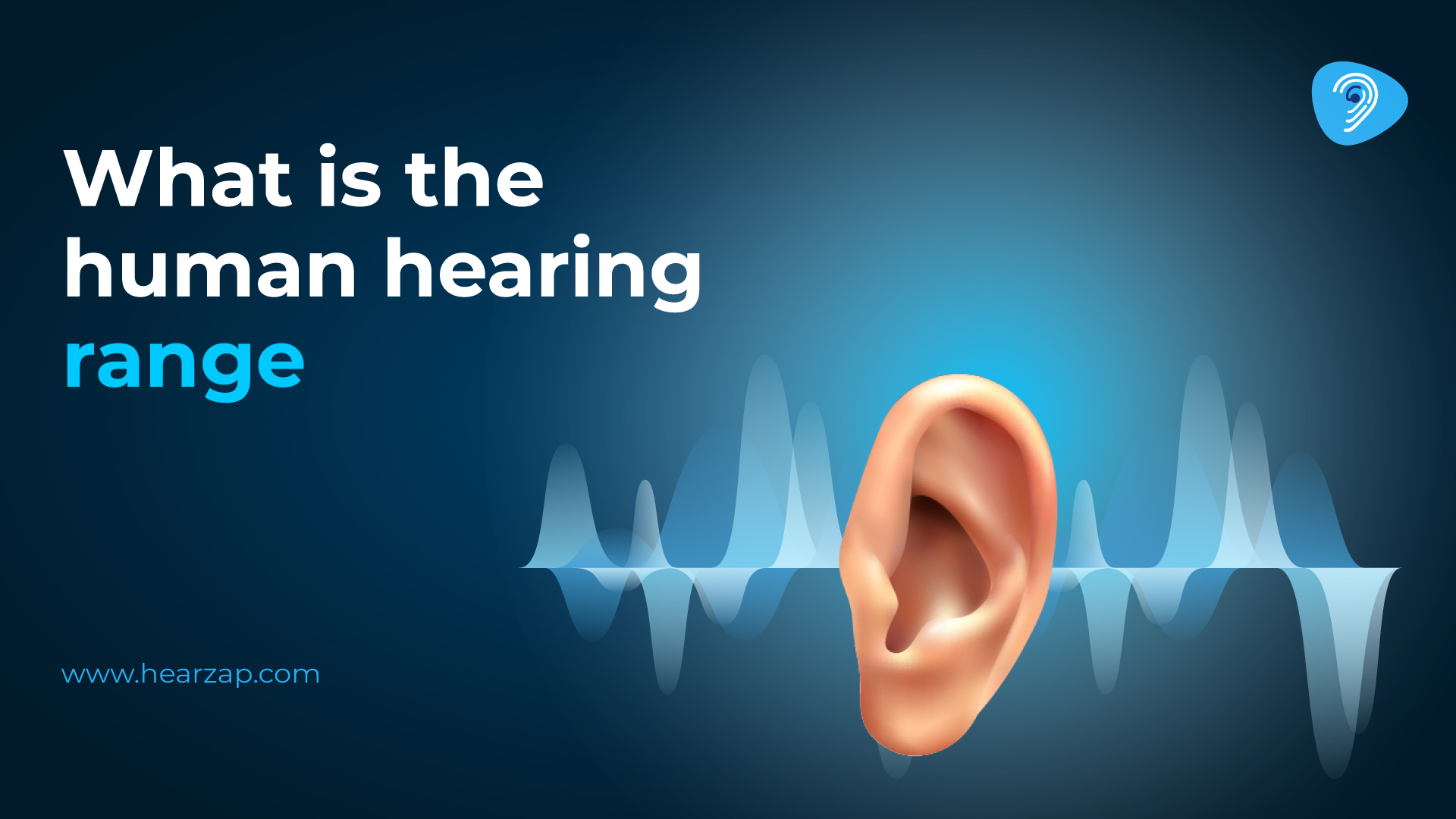Generic
What Is The Human Hearing Range?
By Team Hearzap | Aug. 12, 2024

Hearing range is the term used to describe the frequency range that may be sensed by the human ear. A common range of frequencies is from 20 Hz to 20,000 Hz. This spectrum encompasses a wide range of sounds that may be recognised. Having an understanding of this range enables one to have a better understanding of the human auditory system as well as the necessity of continuing to maintain excellent hearing health.
Low Frequencies
- There is a common association between low-frequency noises that span from 20 Hz to around 250 Hz and sounds that are deep and rumbling.
- It's not impossible to register and hear low-level sounds at the same time. Some of these sounds are the roar of a lion, the hum of a big engine, and the shaking of the bass drum. There are lots of different sounds in music and in the world around us, and it is necessary to hear them all.
- The low rumble of a bass guitar and the rumble of rain are both sounds that fit in this range.
- If you listen to sounds with very low frequencies for a long time, they may damage your hearing over time.
Mid Frequencies
- The ability to hear sounds in the mid-frequency range, which goes from 250 Hz to 4,000 Hz is crucial for understanding spoken language and differentiating between environmental noises.
- These characteristics define this range, which includes the frequencies that are very important for clear data transmission. On a regular basis, you may hear a variety of sounds, including human voices talking. Because of this, we are able to distinguish between people, follow conversations, and identify typical sounds.
- Some examples of sounds that fall within the mid-frequency range include human speech, birdsong, and telephone rings. Keeping your hearing in peak health in this range is crucial for enjoyable conversations. Hearing loss in the mid-frequency range may make it hard for some people to follow conversations or recognise familiar sounds.
High Frequencies
- There is a correlation between high-frequency noises that span from 4,000 Hz to 20,000 Hz and sounds that are sharp and clear.
- A more defined and detailed sound is produced by the presence of high frequencies. Among these noises, you could hear the whistle, the high notes of an instrument, or the rustling of leaves as they fall from trees. We have a greater capacity to pick up on little sonic details when these levels are present.
- Piano high notes, smoke alarm beeps, and flute pianissimos are among the noises. These examples of high-frequency noises are by no means exhaustive.
- .As we become older, our capacity to hear high noises often declines. This is not always the case. They are referred to as presbycusis. You may help preserve your high-frequency hearing by wearing hearing protection and avoiding environments with an excessive amount of background noise.
Why It Is Important To Be Aware Of The Hearing Range
Hearing Health: The need to properly protect one's ears from loud noises may be better understood when one is coassgnisant of the distances to which one's hearing is capable. Sound waves, especially those that are excessively loud or too far away for us to hear, may eventually permanently harm our hearing. The best way to protect your hearing is to use earplugs and limit your exposure to loud noises.
Audio Quality: People who make music or manage audio systems should know how far people's ears can go in order to create inclusive and enjoyable sound spaces. In order for individuals to be able to hear sounds as they were intended to be heard, audio tools and recordings are designed to be compatible with the whole human hearing range.
Ageing: Being cognisant of the ways in which our hearing range varies with age might help us adjust to these changes, which can lead to hearing loss.
Regular hearing examinations and taking preventative measures at an early stage will help prevent hearing loss that is associated with ageing and maintain your hearing in a good state overall.
Conclusion
The spectrum of sounds that humans are capable of hearing is quite broad, taking in everything from the lowest bass to the highest peak. This whole spectrum has an impact on how we see and interact with the environment that surrounds us. By educating ourselves about the sounds we encounter and taking care of our hearing, we may ensure that we will continue to take pleasure in a diverse spectrum of sounds throughout our whole lives.
Contact us
We are here for all your hearing needs, from hearing tests to hearing aids. Fill out the form below, and we will give you a call soon.
Please enter a valid mobile number with 10 digits.
Recent Blogs
By Team Hearzap | April 23, 2025
By Team Hearzap | April 23, 2025
By Team Hearzap | April 22, 2025
By Team Hearzap | April 22, 2025
By Team Hearzap | April 22, 2025
Newsletter Subscription
Subscriber to one-stop hearing care newsletter.












